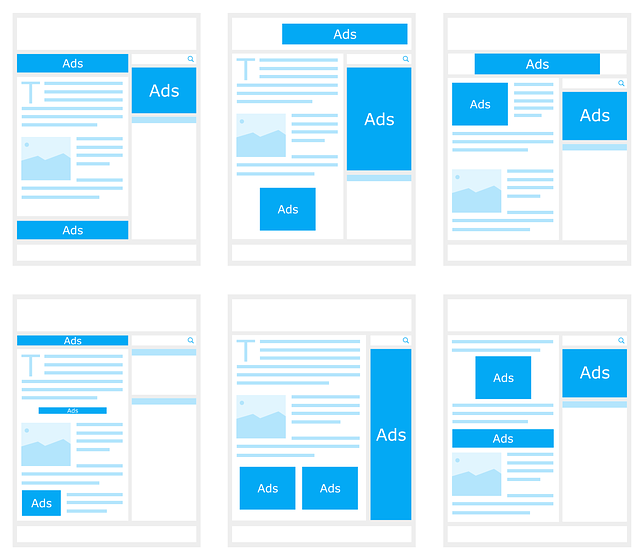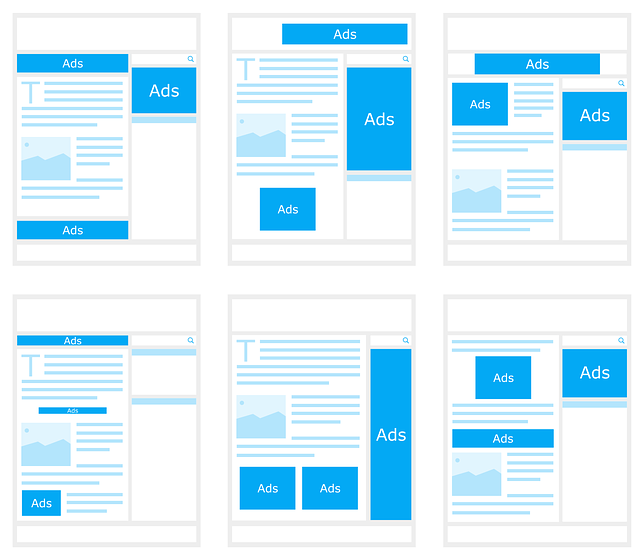We’ll increase conversions by
20-100+%
on your website.
Get a FREE Audit today
See how we can help your business increase conversion rates
Guide In Launching A Successful Remarketing Campaign: Tips And Strategies

Launching a successful remarketing campaign can be the game-changer your business needs, bringing back potential customers who once showed interest in your products or services. In this ultimate guide, we’ll dive into the world of remarketing and provide you with valuable tips and strategies to create powerful campaigns that maximize conversions. Ready to re-engage lost prospects while boosting your ROI? Keep reading to unlock the secrets of a winning remarketing strategy!
Understanding Remarketing
Remarketing is a powerful digital marketing strategy that targets users who have previously interacted with your brand, allowing you to reach out to them again and increase the likelihood of conversions.
Defining Remarketing And Its Purpose
Remarketing, also known as retargeting, is a powerful digital marketing strategy that targets potential customers who have previously interacted with your brand but did not convert. It involves displaying personalized ads to those individuals based on their earlier browsing behavior, encouraging them to revisit your website or product pages and complete the desired action such as making a purchase, signing up for a newsletter, or requesting a quote.
The primary purpose of remarketing is to re-engage potential customers throughout their online journey by reminding them of your products or services at strategic moments. Since most shoppers don’t immediately commit to purchasing upon discovering new brands or offers, remarketing serves as an essential tool in nurturing prospects and gradually guiding them towards conversion. Additionally, this method effectively utilizes ad spend by focusing solely on users who have already shown interest in what you offer rather than casting a wider net with generic advertising campaigns. By understanding the importance of remarketing and its purpose in modern digital marketing efforts, businesses can significantly improve their chances of converting interested visitors into loyal customers.
Benefits Of Remarketing For Your Business
Remarketing campaigns offer numerous benefits to your business, with one of the most significant being higher conversion rates at a lower cost per conversion. By targeting website visitors who have already shown interest in your products or services, you can ensure that your advertising efforts are focused on the most relevant audience possible, ultimately increasing the likelihood of them making a purchase. Remarketing also helps drive customer retention by re-engaging past visitors of a page and reminding them of their previous interest in your offerings.
Moreover, remarketing allows for greater personalization within your digital marketing strategy. Rather than serving generic ads to potential customers, remarketing lets you create tailored messages that resonate with individual users based on their browsing history and interests. For example, if someone was browsing winter coats on an e-commerce site but didn’t make a purchase, a well-crafted remarketing ad featuring those same coats could be just what’s needed to entice them back to complete their transaction. This increased relevance not only catches the attention of consumers but also leads to better overall user experience – which is essential for building long-term brand loyalty and trust.
Additionally, leveraging tools like Google Ads Remarketing Campaigns enables businesses to reach audiences beyond their primary market channels by tapping into Google Display Network (GDN). GDN offers access to millions of websites across different industries where businesses can place display ads promoting their products or services among engaged users who have shown an affinity towards its sector before. Utilizing multiple channels through such networks amplifies brand visibility and creates more opportunities for conversions without significantly raising costs. Overall, investing in google ads remarketing campaign strategies proves beneficial as it boosts efficiency while improving return on investment (ROI) over time—for both small businesses and enterprise-level companies alike.
How Remarketing Works

Remarketing involves targeting people who have previously interacted with your website mobile app users or brand. It works by collecting information about these users, such as their browsing history and actions on your site, and creating lists to target them with specific ads.
One example of how remarketing works is when you visit an online store to browse for a pair of shoes but leave without making a purchase. The store can use the data collected from your visit to show you ads for those same shoes or similar ones while you are browsing other websites or using social media platforms.
Remarketing allows businesses to specifically target users who have shown interest in their products or services, increasing the likelihood of conversion. By repeatedly showing relevant ads to potential customers, businesses can establish brand awareness and build trust with their audience.
Overall, understanding how remarketing works is crucial for implementing successful campaigns that drive conversions and improve overall marketing efforts.
Setting Up Your Remarketing Campaign

To set up a successful remarketing campaign, you need to define your goals and objectives for new campaign, identify and segment your target audience based on their previous interactions with your website, and choose the right platform for displaying your ads.
Defining Your Goals And Objectives
Defining your goals and objectives is the first crucial step in setting up a successful remarketing campaign. Without clear objectives, it’s impossible to measure success or make data-driven decisions. Consider what you want to achieve through your remarketing efforts, whether that’s increasing website traffic, boosting sales or driving brand awareness.
Once you’ve identified your overall goal, break it down into smaller, measurable targets. For example, if your end goal is increased sales revenue, consider how many conversions you need per month or quarter to reach this objective. This granular approach makes it easier to track progress and adjust strategies accordingly.
It’s also important to ensure that your goals align with broader marketing initiatives and business objectives. By doing so, you can integrate remarketing campaigns into larger campaigns and further maximize impact across touchpoints.
Identifying And Segmenting Your Target Audience
In setting up a remarketing campaign, it is crucial to identify and segment your target audience for more effective and personalized marketing strategies. Here are some tips:
1. Define your ideal customer: Determine the characteristics of the customer match the customers you want to target, including demographics, interests, behaviors, and purchasing habits.
2. Segment your ad group and audience: Divide your target audience into different groups based on their similarities and differences. This allows you to tailor your ads to each group’s needs and preferences.
3. Use Google Analytics: Analyze data from Google Analytics to gain insights into your target audience’s behavior on your site, such as which pages they visit most often, how long they stay on each page, and where they drop off in the conversion process.
4. Consider past interactions: Take note of how customers have previously interacted with your brand, such as whether they have made a purchase or filled out a contact form.
5. Leverage customer data: Use customer data like email addresses or phone numbers to create custom audiences and deliver targeted ads directly to them.
By identifying and segmenting your target audience, you can effectively reach those who are most likely to convert into customers through personalized remarketing campaigns that address their unique needs and interests.
Choosing The Right Platform For Remarketing
Once you’ve identified your target audience, the next step in setting up a successful remarketing campaign is choosing the right platform. The most popular and widely-used platform for remarketing campaigns is Google Ads, which offers powerful tools for tracking and targeting website visitors. Facebook and Adroll are other popular options that offer their own unique advantages.
Google Ads allows for highly-targeted campaigns based on user behavior, demographics, and even geographic location. Proper tagging and asset determination are crucial in launching a successful remarketing campaign on this platform. For instance, make sure to set up a Google Analytics account with relevant conversions tracking goals before implementing the Google Ads tag on landing page of your website.
Facebook’s retargeting capabilities allow advertisers to serve ads to users who have interacted with their brand or visited their website while also providing detailed audience insights. Adroll provides access to a vast network of websites across multiple devices allowing marketers to reach users across various channels.
Ultimately, it’s important to consider where your target audience is spending their time online when choosing the right platform for your remarketing efforts. With proper planning and execution, you can develop hyper-targeted messages that drive engagement with previously disengaged customers.
Creating Effective Remarketing Ads

Crafting compelling ad copy and selecting relevant visual elements are key components of creating effective remarketing ads that resonate with your target audience. Utilizing dynamic to create remarketing ads and personalizing ads can also increase their effectiveness in driving conversions.
Crafting Compelling Ad Copy
Creating compelling ad copy is an essential component of a successful remarketing campaign. When creating ads, it’s important to focus on emotional triggers and benefits rather than just features. Use language that connects with your audience and speaks to their needs and desires. For example, if you’re selling running shoes, instead of just talking about how durable they are, emphasize how they’ll give runners the confidence to push through a tough training session.
It’s also crucial to refine your ad content over time based on data-driven insights from Google Analytics or other tracking tools. If certain pieces of content aren’t resonating with your audience, don’t be afraid to refresh them or try something to create a new one altogether. Finally, be consistent in your brand messaging across all channels – this will help increase brand recognition and trust among visitors who have already interacted with your website.
With these tips in mind, crafting compelling ad copy for a remarketing campaign can feel less daunting and more manageable. Remember the importance of emphasizing benefits over features when writing ad copy, refining content through data-driven insights over time, and maintaining consistency in brand messaging across all channels to build strong relationships with customers.
Selecting Relevant And Impactful Visual Elements
When creating your remarketing ads, it’s essential to choose relevant and impactful visual elements that effectively convey your message to potential customers. Here are some tips for selecting the right visuals for your ads:
1. Use images that align with your website visitor brand: Your visuals should be consistent with your brand and match the overall look and feel of your website or product.
2. Highlight product features: Use visuals that showcase the unique features of your products or services, making them more appealing to potential customers.
3. Show benefits: Demonstrate the benefits of your products or services through compelling visuals that portray a positive image.
4. Choose enticing colors: Colors have a significant impact on how people perceive things, so use engaging colors in your visuals to draw attention to your ads.
5. Use high-quality images: Poor quality images can come across as unprofessional and cheapen the overall look of an ad. To ensure ads are high-quality, use crisp, clear images that are visually appealing.
6. Keep it simple: Don’t overload an ad with too many visuals; keep it simple by highlighting one main feature or benefit of a product or service with a single powerful image.
By following these guidelines for selecting relevant and impactful visual elements, businesses can create successful remarketing ads that connect with potential customers visually and generate effective results using Google Ads Remarketing and Ad Retargeting strategies.
Utilizing Dynamic Remarketing

Dynamic remarketing is a powerful tool that allows online advertisers to show ads to previous website visitors containing products and services they viewed on their site. This form of google remarketing ads is especially useful for e-commerce stores, as it helps address concerns around product page and cart abandonment. By using dynamic remarketing ads, you can automatically adjust your ad messaging based on the products your potential customers previously interacted with.
Google Ads offers automation features for specific areas of your dynamic remarketing strategy, such as creating customized templates to create ads that highlight different aspects of your business, including discounts or promotions related to past visitor behavior.
For instance, if someone added an item to their cart but abandoned the purchase process at checkout, you could display a dynamic remarketing ad featuring that exact product along with a special promotion code. This approach keeps potential customers engaged and narrows the gap between browsing and purchasing.
In summary, utilizing dynamic remarketing in Google Ads can help increase brand awareness by tailoring ad messaging towards previous website visitors’ preferences while boosting sales through targeted advertisements that speak directly to individuals’ interests. It’s important for marketers looking to create successful remarketing campaigns always keep this strategy in mind!
Personalizing Ads For Your Audience
Personalizing ads for your audience is crucial in creating effective remarketing campaigns. By tailoring the message to the specific needs and interests of your target market, you increase the likelihood of conversion. One strategy for personalizing ads is dynamic remarketing – this approach shows visitors personalized product recommendations based on pages they’ve visited on a website. For example, if someone has been browsing a shoe store’s website and looking at high heels, dynamic remarketing can display ads that feature those shoes to entice them back to make a purchase.
Another way to personalize ads is by using customer data such as demographics or buying behavior. By incorporating this information into ad copy and creative, businesses can better connect with their target audience and create more meaningful interactions that lead to conversions. It’s important not to be too general in messaging but instead tailor it specifically towards each unique group within your targeted list.
By personalizing ads for your audience you can form deeper connections with potential customers while achieving higher engagement rates leading up to an increased ROI which ultimately paves the way towards success in any given remarketing campaign effort!
Measuring And Tracking Success

To ensure a successful remarketing campaign, it’s imperative to measure and track key metrics such as click-through rates, conversion rates, and return on investment. Discover the best practices for analyzing data and making data-driven decisions by reading more about it in this comprehensive guide.
Identifying Key Metrics To Track
When launching a remarketing campaign, it’s essential to track the right metrics to measure success. Here are some key metrics to consider:
1. Click-Through Rate (CTR): This measures the percentage of people who clicked on your ad after seeing it. A high CTR indicates that your ad is relevant and engaging.
2. Conversion Rate: This metric measures the percentage of users who completed a desired action, such as making a purchase or filling out a form, after clicking on your ad.
3. Cost Per Acquisition (CPA): This metric calculates how much you spend to acquire a new customer. It’s calculated by dividing the total cost of your campaign by the number of conversions.
4. Return On Ad Spend (ROAS): This measures the revenue generated from your campaign compared to its cost. A higher ROAS indicates that your campaign is profitable.
5. View-Through Conversions: This measures the number of conversions that occurred after a user saw, but didn’t click on, your ad within a certain time frame.
By tracking these key metrics, you can make data-driven decisions to optimize your remarketing campaign and improve its overall performance.
Analyzing Data And Making Data-Driven Decisions
To ensure the success of your remarketing campaign, it’s crucial to keep track of key metrics and analyze data throughout. This process will help you make informed decisions about your budget, ad placements, and targeting strategies. For instance, by tracking which ads are driving the most conversions or engagement, you can optimize your bidding strategy to get better results.
Google Analytics is a free tool that provides valuable data on website traffic and user behavior. It allows you to track important metrics such as bounce rate, session duration, and conversion rates.
In addition to Google Analytics, social media platforms like Facebook also provide analytics tools for advertisers. By using these tools effectively and regularly reviewing performance data, you’ll be able to refine your targeting tactics and improve the overall effectiveness of your remarketing efforts.
Ultimately, analyzing data is critical in making informed decisions regarding all aspects of your remarketing display campaign here. With careful planning and analysis of performance metrics over time , you can continuously refine audience targeting methods while achieving maximum ROI from display advertising efforts across multiple channels .
Testing And Optimizing Ads For Improved Performance
After launching your first remarketing campaign here, it’s essential to test and optimize your ads for improved performance. One way to do this is by using search ads using behavioral retargeting, which shows ads based on a user’s previous actions on your website. This tactic often leads to higher conversion rates as the ads are more relevant to users’ interests.
Another effective method is dividing audiences into random groups and testing different ad variations against each other. By tracking metrics such as click-through rates and conversions, you can determine which ad performs best and adjust accordingly. Utilizing audience building for ad targeting can also ensure that your ads reach the right people at the right time.
Ultimately, measuring and tracking success are crucial components of optimizing ad performance in any remarketing campaign. By analyzing data regularly and making data-driven decisions, you can continuously improve and refine your advertising strategy for better results over time.
Advanced Remarketing Strategies

Learn how to level up your remarketing game and avoid common pitfalls with our advanced strategies and mistake-avoidance tips. Don’t miss out on the opportunity to take your remarketing campaign to the next level!
Leveraging Cross-Device Remarketing
One of the most effective ways to increase your remarketing success is by leveraging cross-device to create a remarketing first. This strategy allows you to reach potential customers who have interacted with your business on one device, such as a phone or tablet, and continue to market to them on another device, like their laptop or desktop computer. By doing this, you can keep your brand top-of-mind for users who are likely interested in what you have to offer.
To make the most of cross-device remarketing, it’s important to ensure that you’re accurately tracking user behavior across all devices. You can use tools like Google Analytics and Google Tag Manager to help track user interactions and preferences across search network and devices so that your ads remain relevant no matter where they’re being served.
A great example of this in action is when an e-commerce store uses cross-device remarketing by showing relevant product recommendations based on items viewed previously from mobile devices before someone makes a purchase via their desktop computer later on.
By keeping the messaging consistent across devices and using dynamic ad techniques like personalized product recommendations responsive display ads, businesses can significantly increase engagement rates and ultimately drive more sales through remarketing campaigns.
Combining Remarketing With Other Marketing Channels
One powerful way to maximize the effectiveness of a remarketing campaign is by combining it with other marketing channels. For example, if you have an email list of subscribers who have shown interest in your products or services but haven’t converted yet, you can use your remarketing list and ads to stay top-of-mind and encourage them to take action.
Another effective strategy is social media retargeting. By leveraging data from platforms like Facebook or Instagram, you can target users who have engaged with your brand before and serve them personalized ads that align with their interests. This approach helps create a seamless user experience across different channels and increases the chances of conversion.
When combining your remarketing ad costs with other marketing channels, it’s important to keep track of key metrics such as cost per acquisition (CPA) and return on ad spend (ROAS).
This will help you optimize your campaigns for maximum impact while staying within budget. With careful planning and execution, combining remarketing with other marketing channels can be a game-changer for businesses looking to boost their bottom line.
Implementing Email Remarketing

Email remarketing can be a powerful addition to your remarketing campaign. It involves sending personalized emails to customers who have visited your website or shown interest in your product but haven’t made a purchase yet. These emails typically contain special offers, discount codes, or reminders about items left in the cart. According to studies, email remarketing has an average open rate of 45% and a click-through rate of 14%, making it one of the most effective remarketing strategies.
To implement email remarketing effectively, you need to collect customer’s email addresses during their visits on your website, personalize messages based on their browsing habits and preferences, and time them correctly. Also make sure that the content is relevant and valuable enough for customers to engage with it further or even complete their purchases through that particular interaction.
Overall, combining email marketing with other forms of remarketing campaigns such as display ads can help maximize conversion rates while minimizing ad spend costs by targeting specific leads more effectively throughout multiple channels.
Maximizing The Benefits Of Frequency Capping
Frequency capping is a crucial aspect of optimizing your remarketing campaigns. It involves limiting the number of times an ad is shown to a specific user over a certain period. This approach ensures that users are not bombarded with your ads and increases the chances of them engaging with your brand.
To maximize the benefits of frequency capping, it’s essential to set an appropriate limit based on customer behavior data.
For instance, if you notice that a particular audience segment responds well to three impressions per day, then setting up frequency capping at this level can help reduce ad fatigue and increase engagement rates. By maximizing these benefits, you can ensure that users see your ads just enough times without feeling overwhelmed or disinterested.
It’s also important to test different frequency caps for different segments so you can optimize campaigns accordingly. By analyzing performance metrics like click-through rate (CTR), conversion rates, and engagement levels over time, you can adjust your frequency cap campaign settings further for maximum impact. Overall, taking the time to implement effective frequency capping practices in your remarketing strategy will undoubtedly pay off in terms of better customer experiences and higher ROI.
Conclusion: Key Takeaways And Final Thoughts

In conclusion, launching a successful remarketing campaign requires careful planning and strategic execution. By understanding the purpose of your google ad or remarketing campaign, defining your goals and objectives, segmenting your target audience, and creating effective ads that resonate with your potential customers, you can increase conversions and drive more sales.
Remember to measure your success using key metrics like click-through rates, conversion rates, and ROAS (Return on Ad Spend). Use this data to make data-driven decisions that optimize for improved performance over time.
Finally, employ advanced strategies like cross-device remarketing or combining remarketing with other marketing channels to take your campaigns to the next level. With these tips in mind, you’ll be well-equipped to create an effective remarketing strategy and create campaign that delivers results for your business.








